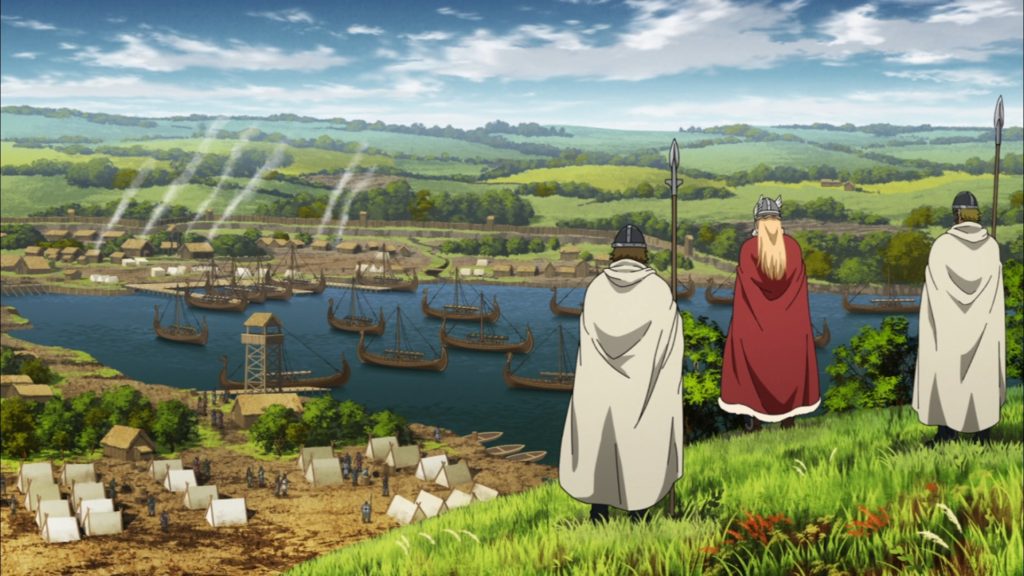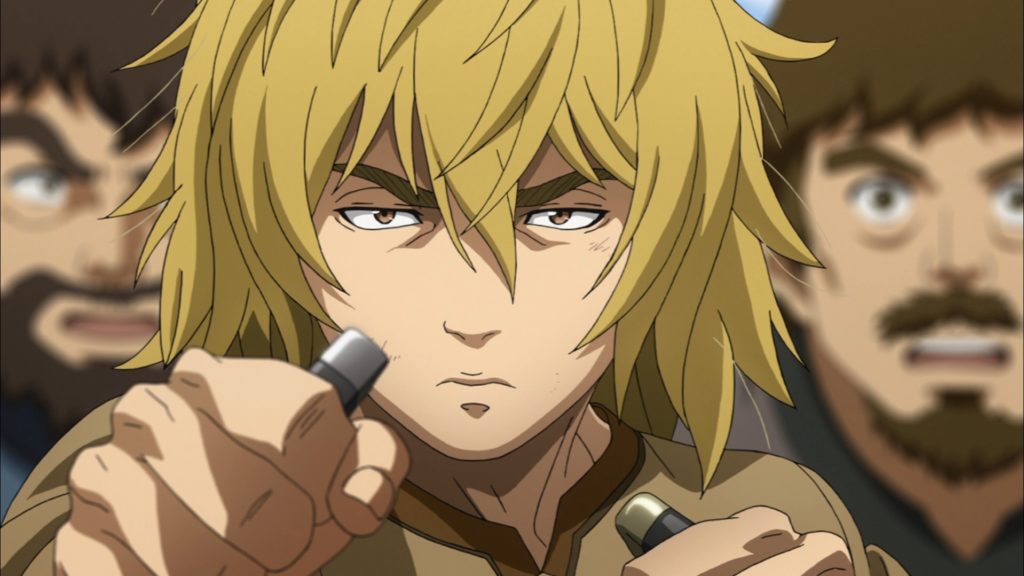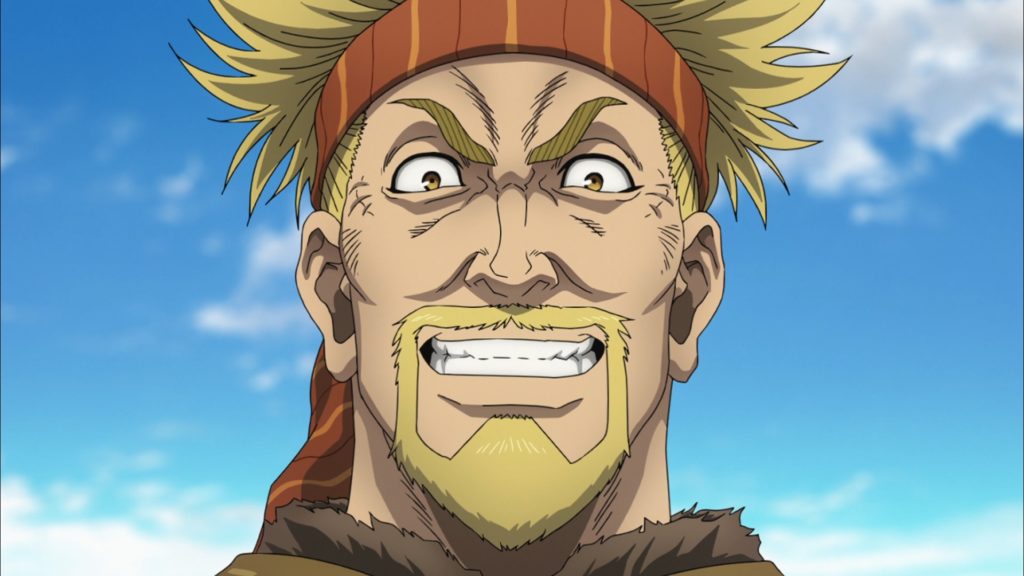Vinland Saga – Collector’s Edition Review
Vinland Saga was originally written by Makoto Yukimura and published in Weekly Shonen Magazine rather than your usual JUMP! effort, though it was soon moved to Monthly Afternoon, which is a magazine aimed at more of your teen/young adult market. The manga alone won many awards and this anime adaptation didn’t perform any worse in that regard either; it ran in the last few months of 2019 yet still made it on to many “Top anime of the 2010s” lists.

So what’s it about? Well, it’s set during the Viking Invasion of Britain, though not the “great heathen army” and “King Alfred unites England for the first time” period we’ve seen in TV shows like Vikings and The Last Kingdom or in the latest Assassin’s Creed game, instead it’s set a little later, focusing on the early 1000s where the Danish ruled most of England, including everyone’s favourite King to misspell King Cnut (written in the subtitles as “Canute”, I guess to make sure of no unfortunate typos…) Unlike some of the shows/games mentioned, Vinland Saga should be applauded for not “picking a side” to show as good and instead showing that the Vikings were often up for a good bit of pillaging (killing innocents, burning their houses and dragging the women off to do with as they please) while the defending and newly dubbed English weren’t above some brutal tactics to try and send the invaders packing. An occasional focus on the spreading Christianity on both sides adds to the historical setting well; overall it’s well researched, given Mr. Yukimura grew up in a country far removed from the setting
The central protagonist of the story is Thorfinn, a young boy who grows up in Iceland dreaming of travelling the seas and is inspired by visiting merchant Leif’s story of an endlessly sprawling continent far west he calls Vinland. Thorfinn is actually based on real historical figure Thorfinn Karlsefni, who, according to records, followed Leif’s route and made a permanent settlement in North America, though it was short-lived. Given he’s just a boy here, beyond dreaming of Vinland, there isn’t much to connect the two; instead he sneaks on board his father Thors’s boat to finally see the sea and ends up instead seeing his father killed by Viking mercenary Askeladd and his men, who use underhanded means to do it. Thorfinn swears to not only kill Askeladd but to do it in a fair duel and so agrees to join Askeladd’s group to get stronger in order to one day kill him. The story jumps ahead a couple of years, so Thorfinn is in his early teens while he does most of the killing, because nobody wants to see a literal child kill people, I guess! This all happens in the first few episodes and frankly it’s a great set-up: you’re given enough time with Thorfinn and his family to care when his dad is killed and then you have this central character who travels with Vikings and helps them do what they do (including lots of the previously mentioned killing, but with a pair of knives rather than a sword!) but is only actually doing it to take out his own boss before he returns home.

Askeladd is also a great character, a bad guy for sure but you’re never quite sure what his plan with Thorfinn is. Is it just so he can have an unnaturally talented new crew member whom he has every plan to kill when he tries to kill him, or does he in some way feel guilt over the dishonourable way he killed his father and he sees this as a make-do, that he’d be fine if the kid would one day grow up to kill him? His role gets more complicated later when his men end up escorting the then-Prince Cnut around England and Wales and face hostile English forces led by a massive Dane called Thorkell, who has switched sides for no other reason than he figured his fellow Vikings would be more of a challenge to fight against. This gives us a new central antagonist but trust me when I say Askeladd and his men aren’t in any way presented in a positive light as a result. Cnut, on the other hand, is introduced as an extremely shy and timid prince who slowly comes out of his shell as a future leader, in part due to Thorfinn’s harsh words to him, given he has no actual allegiance to the Danish royal family, Iceland being outside of their influence. It’s a very exciting and addictive story to follow.
The animation is of a very high quality as well, created by Wit Studio of Attack on Titan (well, their first few seasons) and recently Spy X Family fame. Much like Attack on Titan, the characters aren’t as over-exaggerated as in some anime (with one or two exceptions…) and that adds to the effect of the brutality on show. The music was composed by Yutaka Yamada, whose only major anime has been the Tokyo Ghoul series, and it’s fine. It’s dramatic when it needs to be, sombre when it needs to be, but it’s definitely one of those series that uses the sound effects like crackling flames, swords and axes clashing, and blood splattering to get across the battle scenes, rather than relying on too heavy a music track. Speaking of music, there are two openings and two endings, unsurprisingly, given it’s two cours long. The openings are “MUKANJYO” by Survive Said The Prophet and “Dark Crow” by Man with a Mission and both are a bit more heavy rock and shouty for what you might expect (man that made me sound old…) while the two endings of “Torches” by Aimer and “Drown” by milet are more quiet and reflective.

Both voice casts do their jobs well, and if you’re wondering, the English dub by Sentai is the one featured on the discs, the Netflix-produced dub is unsurprisingly confined to Netflix. There are some odd scenes where they try and get across that, say, the Danish character is trying to speak English to the Englishman or at one point Thorfinn is talking to a French ruler and they have a translator speak to each of them what the other is saying, but in all these cases everyone is speaking Japanese or English, depending on your choice, so the translator is just repeating what each one says, word for word in the same language they’re all speaking, so it’s very odd. The Japanese cast do put emphasis when one character is supposed to be speaking another language by speaking more simplistically and slowly, whereas the Sentai dub throws in a few accents and such to try and establish the difference alongside other audible clues (including some awkward Welsh accents), but it felt like an odd choice in the end. I’d rather they just not address it, it would be less historically accurate, yes, but would’ve made it less… weird to watch in some scenes.
MVM’s collector’s edition features the full 24-episode run as well as a 176-page art book, 6 art cards and a nice “rigid box” to keep it all in.

Overall Vinland Saga takes its time to start with but only to make sure the weight of the moment that changes Thorfinn’s life has actual impact. Once we jump forward a few years and we follow Askeladd and his group, it never really slows down and has a great mix of a reasonably well realised historical setting, action and character drama with great animation to boot. Highly recommended.


